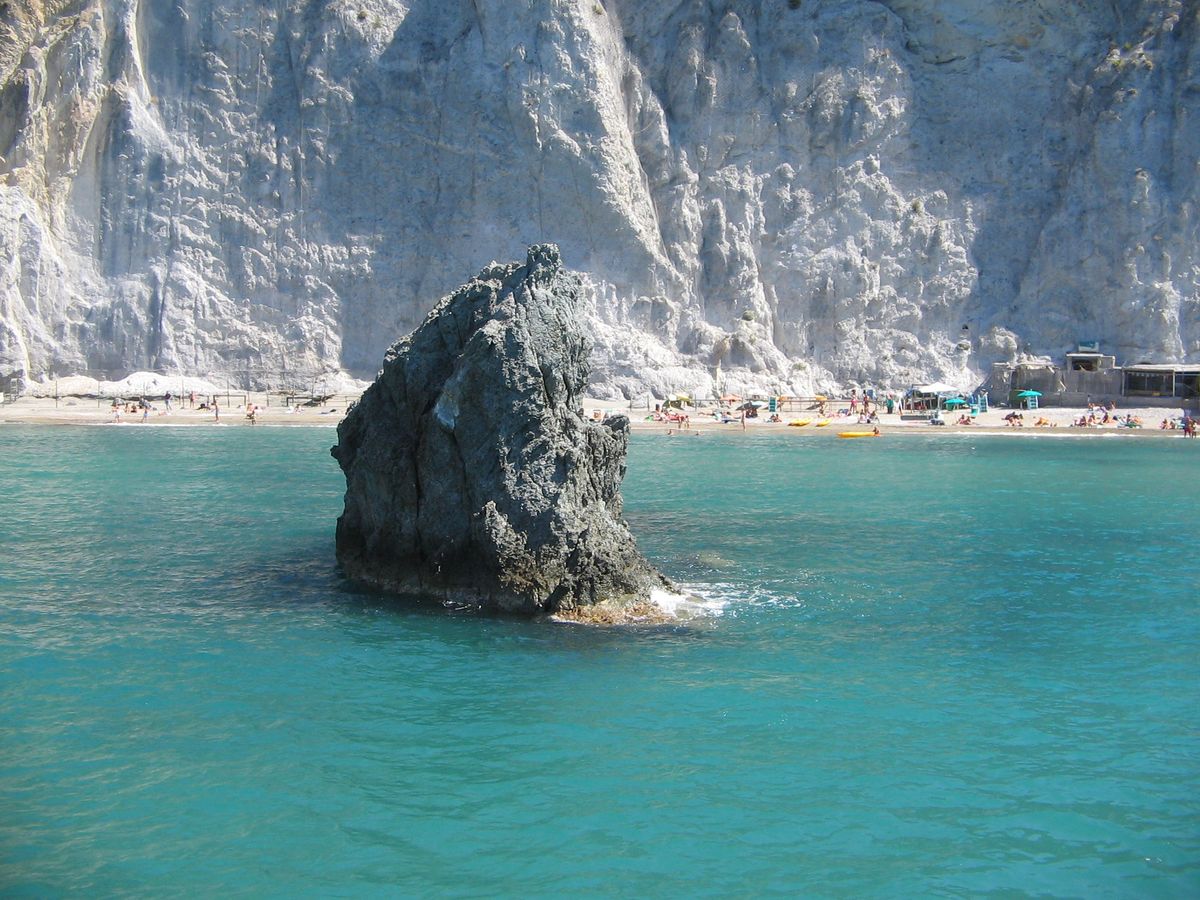About
The volcanic island of Ponza is blessed with a chromatic richness and no cliff looks the same.
The world-famous crescent-shaped beach of Chiaia di Luna (Half Moon Beach) is dominated by sheer vertical white and yellow tuff cliffs that rise more than 300 feet (100 meters) above the turquoise-colored sea below. Locals claim that on nights when the moon is full, the cliffs reflect the lunar light back onto the waters below.
At sunset, either from the sea or from the viewpoints above, it's considered one of the most romantic and scenic sights in Italy's Pontine archipelago. Also known as the Ponziane, the Pontine Islands are made up of two groups: Ponza, Palmarola, Zannone and Gavi to the northwest and Ventotene and Santo Stefano to the southeast.
The history of Ponza and Chiaia di Luna dates back thousands of years. It is believed that the island was first settled by a group of Etruscans, who cut down the heavy forests and created terraces to use for farming. Greek amphoras have been discovered in the waters. There is also an elaborate 524-foot (160-meter) tunnel that was dug by the Romans into the rock to allow easier transportation between the two ends of the island.
There is evidence that the natural bay at Chiaia di Luna was chosen as a safe landing site. The tunnel still provides the only way to reach the beach on foot. Above the beach, archaeologists also discovered the remains of one of three Roman necropolises on the island
For the past few years, access to the beach from either the tunnel or the sea is has been forbidden due to the high risk of rockfall. Travelers to the region must be content with admiring this crescent-shaped wonder from afar.
Related Tags
Know Before You Go
The beach itself is closed to visitors, but you can admire it from the water or the surrounding cliffs.
Flavors of Italy: Roman Carbonara, Florentine Steak & Venetian Cocktails
Savor local cuisine across Rome, Florence & Venice.
Book NowCommunity Contributors
Added By
Published
March 16, 2021




























